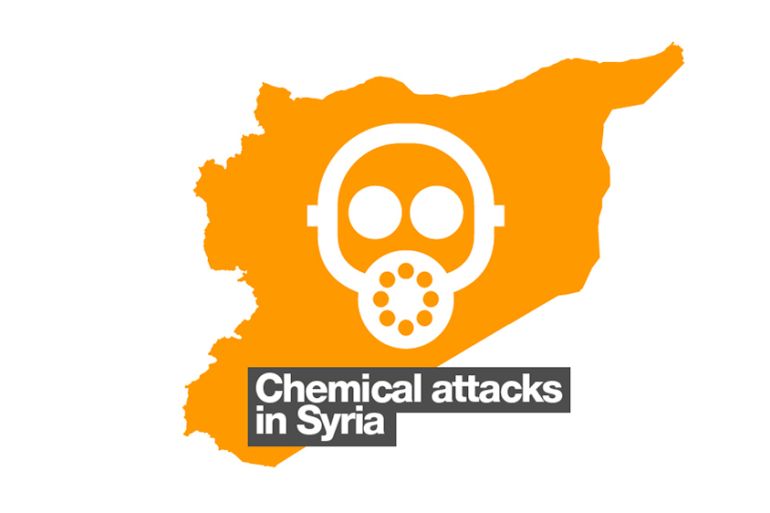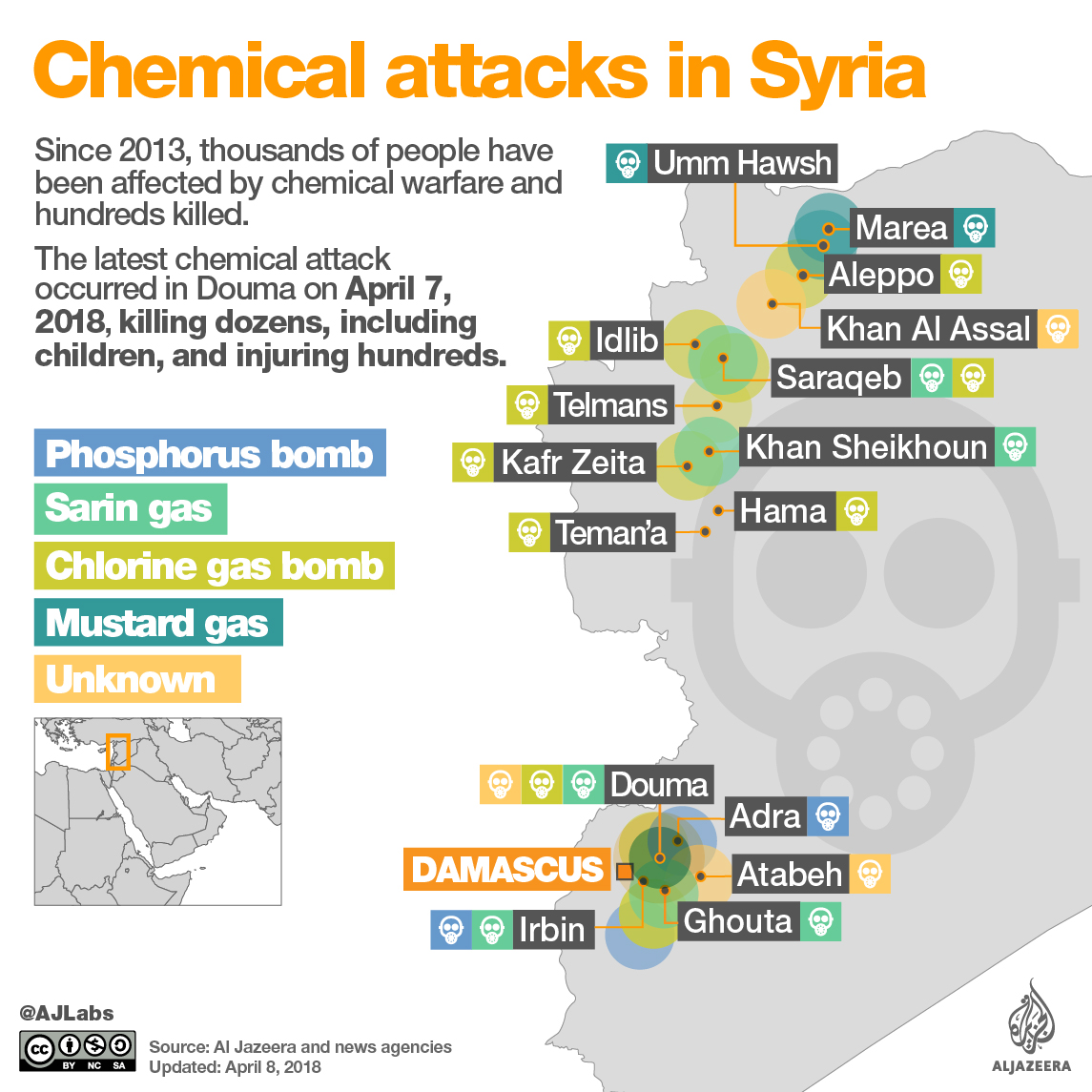Chemical attacks in Syria
Since 2013, thousands of Syrians have been injured and hundreds killed by chemical warfare.

Since 2013, thousands of Syrians have been injured and hundreds killed by chemical warfare.
The first chemical attack on record in Syria was in March 2013 near Aleppo. Since then, 17 locations have been attacked with chemical weapons.
Keep reading
list of 4 itemsMapping Israel-Lebanon cross-border attacks
Eid Mubarak: Hear greetings in different languages
When is Eid al-Fitr 2024 and how is it celebrated?
One year ago, sarin gas (or a sarin-like substance) was used to attack the town of Khan Sheikhoun. On the anniversary of that attack, Al Jazeera looks at the various chemical weapons used to attack rebel-held areas since 2013:
Sarin
Sarin gas is odourless and tasteless and works immediately to inhibit natural processes that control neurotransmitters in the body. The nerves are overstimulated uncontrollably, and the afflicted person’s nose starts running, eyes crying, and they vomit continuously as their bowel and bladder evacuate themselves. Depending on the level of exposure, sarin gas can cause death within 10 minutes.
White phosphorus
White phosphorus has been used in conflicts since World War I. It is highly efficient at creating smoke and is used to cover troop movements or positions in conflicts. Exposure to white phosphorus causes severe burns as the gas sticks to the skin and causes severe burns that can result in the absorption of phosphorus into the organs of the body. In addition, inhalation of phosphorus smoke or fumes, as well as the oral ingestion of as little as 15mg can affect the body’s organs and bones, sometimes causing death.
Chlorine gas
Used as a chemical weapon in World War I, chlorine gas is dispersed when pressurised chlorine is delivered via any explosive device. An everyday chemical with many peace-time uses, chlorine is readily available and exists in a grey area as a chemical weapon. Exposure to chlorine gas causes respiratory distress, severe irritation to the respiratory tract and eyes, and, depending on the level of exposure, can cause lasting damage to both.
Mustard gas
Mustard gas, or sulfur mustard, is a yellowish brown gas that has an odour resembling mustard, garlic or horseradish. It is a blistering agent, causing severe blisters on the skin and in the lungs. The effects of mustard gas are not immediate, and victims can start showing symptoms up to 24 hours after exposure, with chemical burn blisters appearing all over the body and, in some cases, damage to eye tissue and lungs. Severe mustard gas burns (on more than 50 percent of the body) can be fatal, and mustard gas victims are said to be more likely to develop cancer later in life. It was used towards the end of World War I and during the Iraq-Iran war between 1979-1988.
